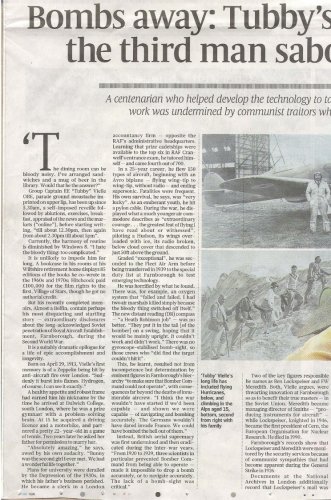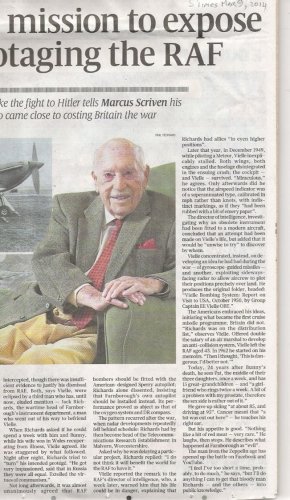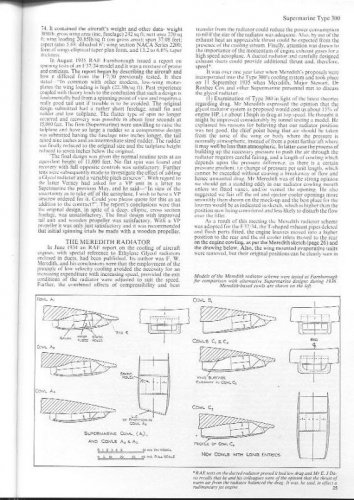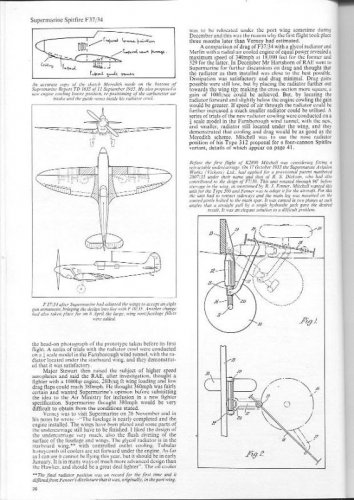- Joined
- 12 October 2009
- Messages
- 557
- Reaction score
- 194
Why the fascination with piston engines history: simply they are very important. Sidney Camm wrote in his 1966 article 'A Lifetime of Design':
"Looking back over the development of aircraft one is struck by the number of factors that have to be considered --aerodynamics, materials and structures are the main categories and it is fascinating to notice how from time to time, just as we had seemed to reach a stage when progress was slowing down, some new discovery would raise the horizon again. The classic case of this, of course, was the jet engine that was being developed by Frank Whittle. From 1930 it had been obvious that we were approaching the limit of speed with the airscrew engine combination, as in spite of all we could put into airscrew developments, any extra power developed by the engine was wasted due to tip speed losses of the airscrew, and it looked as though speeds between 450-500 mph were about as far as we could go with this arrangement.. Almost overnight the Whittle engine changed this and although we are again approaching a limit due to what may be called the heat barrier, I am sure this will be surmounted.
The point which emerges from this is the dependence of the aircraft design on the production of improved powerplants. This was obvious, even in the days of the Wrights. They first flew, not because their aircraft had any great merits, but because they produced a powerplant-airscrew combination able to lift the somewhat cumbersome machine off the ground. The introduction of the rotary Gnome engine in 1911 was responsible for a tremendous surge forward until the arrival of the Hispano Suiza in line engine which more or less eclipsed the rotary type of engine, although it was still used on a number of aircraft with some success until the arrival of the Rolls-Royce Kestrel in 1927."
This seems a good reason for a technology thread.. this one on piston engines.
A successful technology is only 'successful' if it impacts on an engine in one or more of these categories:
New types and power increases
Changing operational requirements
Environment
Flight operations
Aircraft installations
Repair capability
Life development
Manufacture and suppliers
All these need to move forward if a new technology is to be successfully adopted... it is interesting how the RR racing 'R' engine which gave vast power increases in a short space of time ,,, but only for a life of 1 hour at max output was emulated by the progress of the Merlin, ten years later- but for 100 hours plus life.
"Looking back over the development of aircraft one is struck by the number of factors that have to be considered --aerodynamics, materials and structures are the main categories and it is fascinating to notice how from time to time, just as we had seemed to reach a stage when progress was slowing down, some new discovery would raise the horizon again. The classic case of this, of course, was the jet engine that was being developed by Frank Whittle. From 1930 it had been obvious that we were approaching the limit of speed with the airscrew engine combination, as in spite of all we could put into airscrew developments, any extra power developed by the engine was wasted due to tip speed losses of the airscrew, and it looked as though speeds between 450-500 mph were about as far as we could go with this arrangement.. Almost overnight the Whittle engine changed this and although we are again approaching a limit due to what may be called the heat barrier, I am sure this will be surmounted.
The point which emerges from this is the dependence of the aircraft design on the production of improved powerplants. This was obvious, even in the days of the Wrights. They first flew, not because their aircraft had any great merits, but because they produced a powerplant-airscrew combination able to lift the somewhat cumbersome machine off the ground. The introduction of the rotary Gnome engine in 1911 was responsible for a tremendous surge forward until the arrival of the Hispano Suiza in line engine which more or less eclipsed the rotary type of engine, although it was still used on a number of aircraft with some success until the arrival of the Rolls-Royce Kestrel in 1927."
This seems a good reason for a technology thread.. this one on piston engines.
A successful technology is only 'successful' if it impacts on an engine in one or more of these categories:
New types and power increases
Changing operational requirements
Environment
Flight operations
Aircraft installations
Repair capability
Life development
Manufacture and suppliers
All these need to move forward if a new technology is to be successfully adopted... it is interesting how the RR racing 'R' engine which gave vast power increases in a short space of time ,,, but only for a life of 1 hour at max output was emulated by the progress of the Merlin, ten years later- but for 100 hours plus life.






